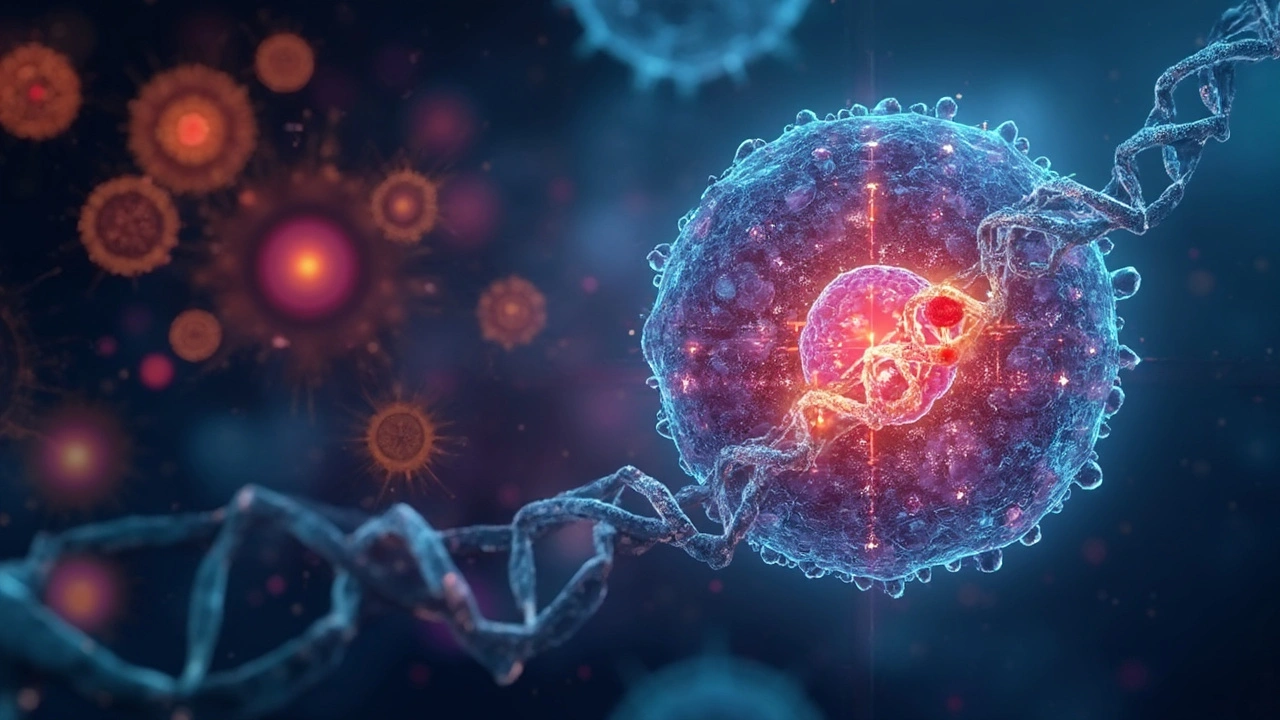Tumor Suppressor Genes: What They Do and Why They Matter
Most cancers begin when normal cell controls fail. Tumor suppressor genes are part of those controls — they act like brakes that stop damaged or abnormal cells from multiplying. When these genes stop working, cells can grow out of control and form tumors.
Think of tumor suppressor genes as tools in three key jobs: repairing DNA, slowing cell division, and telling damaged cells to self-destruct (apoptosis). If any of these tools are broken, mistakes pile up. Over time those mistakes can turn a single cell into a growing tumor.
Common tumor suppressor genes and what they do
p53 is often called the "guardian of the genome." It senses DNA damage and either pauses the cell cycle to allow repair or triggers cell death. Mutations in TP53 show up in roughly half of all cancers.
BRCA1 and BRCA2 are best known for inherited risks for breast and ovarian cancer. They help fix a specific type of DNA break. If one copy is faulty from birth, a second hit later in life can let cancer develop.
RB1 controls the transition from one part of the cell cycle to the next. When RB1 is lost, cells can run through the cycle without proper checks. APC is a gatekeeper in colon cells — when APC fails, colon polyps and cancer risk rise. PTEN keeps growth signals in check; losing PTEN ramps up cell survival and division.
How loss of tumor suppressors leads to cancer — and what to do about it
Many tumor suppressor genes follow the "two-hit" idea: you inherit or acquire one broken copy, and a second event disables the other copy. That second event can be a mutation, deletion, or other change. Some losses are inherited (germline) and raise lifelong risk; others happen only in tumor tissue (somatic).
Why does this matter for you? First, knowing a tumor suppressor mutation runs in a family can change screening and prevention. For example, BRCA carriers may start breast MRI earlier or consider risk-reducing surgery. Genetic testing is the path to that knowledge — but testing should come with counseling so you understand options and limits.
On the treatment side, some therapies work better when specific tumor suppressors are lost. PARP inhibitors help cancers with BRCA defects. Researchers are testing ways to restore p53 function or exploit cells’ weaknesses when PTEN or RB1 are missing. That means a genetic report can guide more personalized therapy decisions.
If you’re worried about family cancer history, start by listing relatives and their cancers, then talk to your doctor about a referral to genetic counseling. Don’t ignore routine screening tests — colonoscopy, mammography, and others catch problems early. Small steps like knowing your family history and asking the right questions can make a big difference.
Want more clear, practical reads on related topics? Browse our tag page for articles on genetics, specific drugs, and tests that help you take control of health decisions.
Key Genetic Mutations Behind Aggressive Cancer Growth: Oncogenes & Tumor Suppressors Explained
Dig into the real drivers of aggressive cancers: the genetic mutations that push cells to multiply and resist control. This article lays out the major oncogenes and tumor suppressor genes making it happen, their deadly dance, and how you can actually spot and use this info. Covering hard facts with a practical lens, it tackles both the shocking speed of tumor growth and how doctors chase down these genetic clues. If you want to understand why some cancers explode while others simmer, all roads lead to your DNA.
View more
